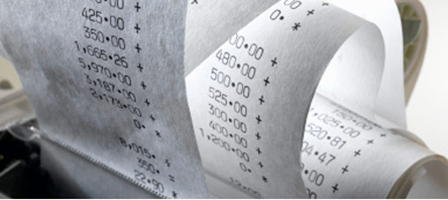Unraveling the Economic Impact Payments Confusion
- Learn some background information on economic impact payments.
- Learn how to compute economic impact payments.
- Find out which tax years advance payments are based on.
- Learn how advance payments for retirees, disabled and veterans work.
- Find out how non-filers receive advance payments.
- Take a look at the schedule for payments made by check.
- Find out what happens if you didn’t receive an economic impact payment but should have.
Millions of Americans have already received their economic impact payments authorized by the Coronavirus Aid, Relief, and Economic Security (CARES) Act. If you have not received a payment or received an amount larger than expected, you may need some answers. And Fiducial has them. But first, a little background on the payments:
- The payment is actually a refundable credit that will be computed on your 2020 tax return. The IRS bases the payment upon your 2020 family composition and AGI that is paid in advance.
- The credit is $1,200 for each individual other than dependents.
- Each individual (or married couple) with a dependent child under age 17 will receive an additional $500 for that child. There is no additional $500 credit for children 17 or over or for other dependents.
- The payments are meant to assist lower-income individuals and families, so the amount of payment is reduced for higher-income individuals. The reduction begins when a single individual’s AGI reaches $75,000 ($150,000 for married couples). For those that file as head of household, the reduction begins at $112,500. Payments reduce by 5% of AGIs exceeding these thresholds.
- If you do not have a Social Security number, you will not receive a payment.
How does the IRS calculate economic impact payments?
If this refundable credit is based on a 2020 tax return that won’t be filed until next year, how does the IRS know how much to pay in advance? Good question! The purpose of these advance payments is to quickly get money in the hands of those who need it. So, the government looked for a way to estimate the advance payments. The most expeditious method was to base the payments on family composition and income from 2019 tax returns or 2018 returns for those who haven’t yet submitted their 2019 returns. You can use the table below to compute your advance payment based upon your 2019 or 2018 filed return. You can also use this table to compute your credit on your 2020 return.

Where the 2019 or 2018 return resulted in a refund and included direct deposit information, the advance economic impact payments were direct deposited into individuals’ or couples’ bank accounts. These direct deposits were made very early in the process. Hiccups have occurred in which bank account information had changed since the returns were filed. In those cases, those individuals have to wait for a check to be mailed later.
What if circumstances have changed since your 2018 return?
Are you beginning to see where some problems might arise? Suppose you and your ex-spouse filed a joint 2018 return and were divorced in 2019 but haven’t filed your 2019 returns yet. Where will the joint payment go based upon the 2018 return? Or suppose you added a child to your family in 2019 but didn’t file the 2019 return in time, and the payment was based on your 2018 return. Your payment will not include the extra $500 for your dependent child. We could go on and on with all sorts of scenarios that are creating unexpected results.
Payments for those not required to file a tax return
These economic impact payments are due to more than just those who filed a 2019 or 2018 tax return. There are many Americans who are not required to file a tax return, including retirees receiving Social Security (SS) or Railroad Retirement, SS disability, SS survivor’s benefits, and veterans’ benefits, as well as those who should have filed returns but have not, and the homeless.
To reach as many of those individuals as possible, the IRS is automatically making payments of $1,200 to recipients of Social Security or Railroad Retirement, SS disability, SS survivor’s benefits, and veteran’s benefits who have not filed a 2018 or 2019 tax return. Of course, the IRS has no way of determining if individuals in these categories have spouses who are not receiving benefits or if they have dependent children under age 17. These individuals were given the chance to provide their spouses’ and dependent children’s information to the IRS prior to payments being made. Unfortunately, the time to provide that information has passed. Where the IRS has direct deposit information, they will deposit the payment into the individual’s bank account. Others will have to wait for a paper check.
Those not in any of the previously discussed categories can provide their information to the IRS by using the non-filer tool on the IRS web site.
Economic impact payments by check
If the IRS does not have your direct deposit information, it has changed, or the bank rejected the IRS’ attempt to deposit the payment, you will receive the payment by check. The checks are being issued to the lowest-income individuals first, where the need is the greatest. Payments to those with increasing incomes will follow. Here is the estimated release schedule for the payments by check.

What happens if you don’t receive an advanced payment?
The next big question you might have is, “What happens if the IRS does not send me an advance payment?” Well, all is not lost. The payments, as explained earlier, are an advance on a refundable credit allowed on your 2020 tax return when it is filed in 2021. So, if you were short-changed on the advance payment, you will get your payment or any shorted amount as a refundable credit on your 2020 return.
Example: Don and Shirley, whose AGI is less than $150,000, are newlyweds with no children. They filed a joint return in 2019. They receive an advance economic impact payment of $2,400. In 2020, they have a baby, and when their credit is determined on the 2020 return, it is $2,900 ($1,200 + $1,200 + $500). Since they only received $2,400 as an advance payment, they will be entitled to a $500 refundable credit on their 2020 return. The credit will first be used to reduce their tax, and then any excess credit will be refunded.
However, keep in mind that the 2020 credit is based on filing status, dependent children under age 17, and AGI for 2020. The advance payment was based on filing status, children under age 17, and AGI for 2019 or 2018. This can create some substantially different results.
Was your economic impact payment too large? What happens next?
Of concern to those whose advance payment was too large is whether the excess will have to be repaid. The CARES Act that authorized this credit and the advance economic impact payments specifies that any amount by which the advance exceeds the credit computed for the 2020 tax return does not have to be repaid.
Example: Shelly, a single parent, files her 2019 return claiming her 15-year old daughter, Whitney, as a dependent. Shelly’s AGI is below $75,000, so Shelly will receive an economic impact payment of $1,700 ($1,200 for herself and $500 for Whitney). In 2020, Whitney goes to live with her dad, and so when Shelly files her 2020 tax return, she no longer has a dependent child under age 17. Thus, the credit computed on her 2020 return is only $1,200. However, Shelly does not have to pay back the difference.
As you can see, there are any number of variations that can impact how the advance payment was determined and how the credit is figured on the 2020 return, including marriage, divorce, births, deaths, emancipations, and AGI.
Have questions about economic impact payments? Call Fiducial at 1-866-FIDUCIAL or make an appointment at one of our office locations. Ready to book an appointment now? Click here. Know someone who might need our services? We love referrals!
For more small business COVID-19 resources, visit Fiducial’s Coronavirus Update Center to find information on SBA loans, tax updates, the Paycheck Protection Program, paid sick and family leave, and more.









